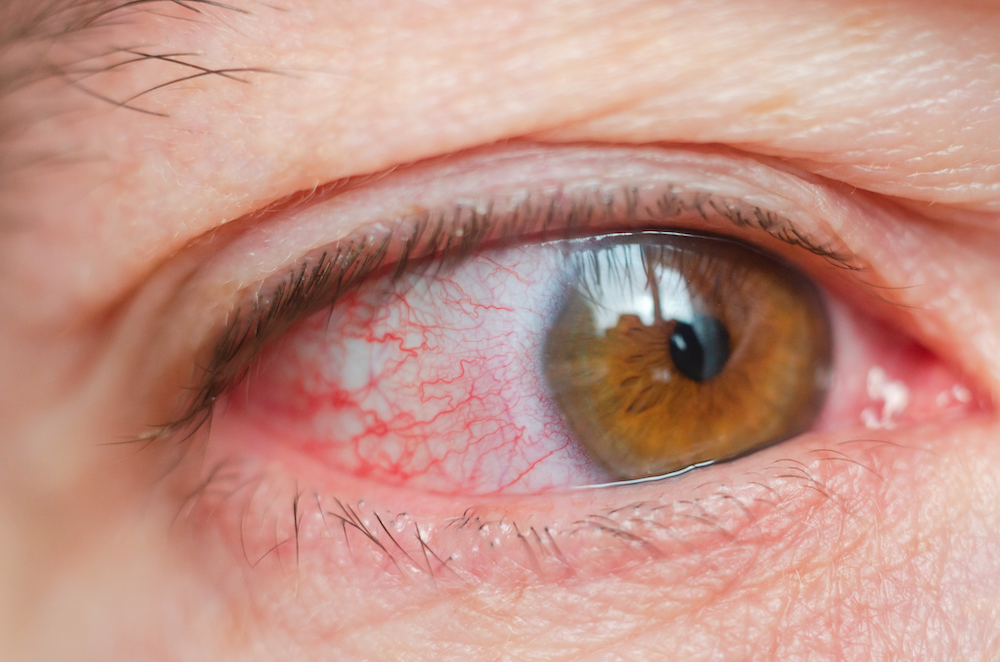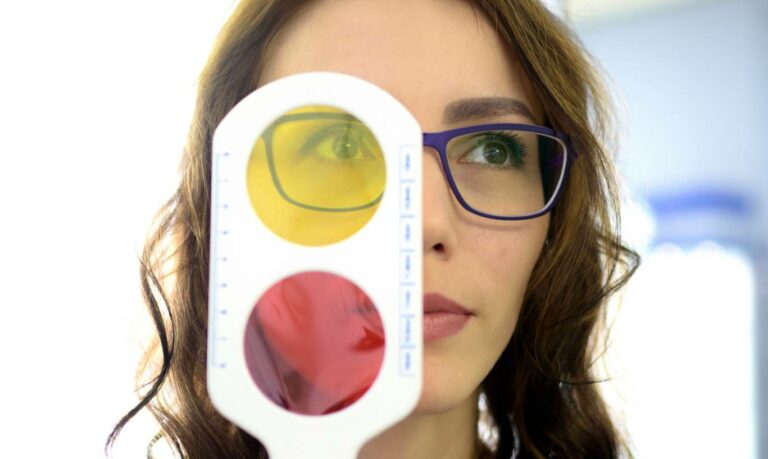One of the most common eye problems causing patients to see an eye doctor is an eye infection. Whether you caught a case of pink eye or it’s a more serious issue, it’s best to see an optometrist as soon as possible if you’re experiencing irritation, redness, discomfort, or any noticeable symptoms in and around your eye.
At VisionFirst, we are your neighborhood team of eye care professionals in the Louisville, Central Kentucky, and Southern Indiana area. With 15 different locations you can easily get in to see us when you’re dealing with an infection (or for routine exam, preventative care, and more!) We can proudly boast that we care about your eyes. Because you not only deserve intentional care, but also to be informed, we wanted to give you the 411 on eye infections.
Being able to recognize symptoms when you’re dealing with what could be an eye infection is important so you can find answers and the right treatment.

Here are 4 Types of Common Eye Infections
Conjunctivitis
Commonly referred to as “pink eye,” conjunctivitis is a common, highly contagious eye infection that results from inflammation or infection to the conjunctiva area of your eye. Usually caused by a bacterial infection, or sometimes an allergic reaction, it can cause the blood vessels in the conjunctiva area to become inflamed and more visible. This is where the “pink eye” name comes from. There are roughly 3 million cases of Conjunctivitis a year but the infection rarely causes anything serious such as vision loss.
Keratitis
Keratitis is an infection located in the cornea of the eye. This is a common infection of people who regularly wear contact lenses. This infection is usually caused by a virus, bacteria, or parasites found in water. There are multiple types of keratitis which include:
- Fungal: this type of keratitis made news in 2006 for its common appearance in contact lenses wearers who swam with their contacts in.
- Acanthamoeba: this type of keratitis can be very threatening to your sight.
Using caution when your contact lenses come in contact with water and avoiding wearing contacts while swimming is a great way to reduce the risk of exposing your lenses to virus, bacteria, or parasites. One of the trusted contact lenses brands we use and recommend at Vision First is Acuvue. They provide great contact lenses products that are comfortable and yield clear vision- causing less irritation to the eye. Watch this video by Acuvue to learn more about the benefits of changing out your contact lenses as directed by your eye care doctor.
Stye
A stye is a small bump that develops on the outside or inside of the eyelid. Sometimes referred to as a hordeolum, a stye can be caused by a variety of things including a clogged eyelash, oil from the eyelid, outside debris, and even stress. Styes are seemingly harmless but usually cause discomfort and inconvenience to the person affected by it. They can create a bubble that is filled with puss and may cause pain, but it should subside after the bubble is drained. Hot compresses and eye drops tend to make styes disappear more quickly.
Endophthalmitis
This infection cause inflammation in the white of the eye. It can also produce a white or yellow discharge inside the eye. It has chronic and acute forms, meaning it can appear rapidly or slowly but persist longer. It is usually a serious problem requiring antibiotics. There is up to an 8% risk of Endophthalmitis when a penetrating eye injury occurs. In some cases, the infection can occur as a complication from eye surgery. Without treatment, endophthalmitis can cause blindness.

Corneal Ulcers
A corneal ulcer is not an infection, but is one of the most common results of an eye infection. Your cornea is the clear dome that covers the iris (the colored part of your eye) and pupil (the black center of your eye.) It’s the most outer part of your eye. A corneal ulcer is an open sore on the cornea. It’s a serious problem that could also result in blindness, but with treatment most cases improve with little to no damage. A corneal ulcer can appear as a white or grey spot on the eye but is sometimes too small to see.
Eye Infection Symptoms Don’t Lie
You may experience some or all of the following symptoms if you have or are developing or an eye infection:
- Pain/discomfort
- Itchiness/irritation of the eye
- Uncomfortable feeling of something in your eye/eye area
- Sensitivity to Light
- A burning sensation in/around your eyes
- Small, painful bump under your eyelid or base of eyelashes
- Eyelid is tender to the touch
- Watery eyes
Of course other conditions like allergies can show similar symptoms. But always remember that you shouldn’t just accept and get used to these kinds of symptoms. They are your eyes way of telling you something’s not right. Pay attention to them.
Treatments for Eye Infections
Our eyes are powerful, healing organs. They are capable of fighting against infection and disease when it strikes. Most common bacterial eye infections will clear up over time with proper medications such as antibiotics, eye drops, or ointments, depending on the type of infection.
Some viral eye infections can heal naturally. With other viral cases, an antiviral eye drop may be prescribed by your doctor. Also some viral infections may require special administration of steroid eye drops to reduce inflammation in the eye.
There are also the tried and true practices that can halt an infection from developing even after the eye is exposed to bacteria or viruses. Here are a few:
- Good hygiene can prevent infections. Also gentle, “no tear” formula baby shampoo can be applied to the eyelids to remove bacteria that naturally live on our skin but can build up and cause conjunctivitis.
- Avoid sleeping in contact lenses.
- Clean your hands thoroughly before touching your eyes such as in the case of inserting a contact lens.
- Throw away contacts that are past the recommended time for usage.
- Always following the proper steps for using and caring for your contact lenses. Here are two more videos that remind us of the proper steps for how to put in contact lenses and how to take off contact lenses.
As you can see from several of the best practices above, contact lenses have a major impact on the health of your eyes. They are a powerful and accommodating tool for so many people with bad vision. But if they are not handled correctly, it is a leading cause of eye infections.
We encourage you to do all you can to protect your eyes from bacteria and viruses. When we hear that someone has the flu, we’re quick to wash our hands. But what about all the things we touch on an average day and how often we place our hands around our eyes.
We hope this information leaves you more informed. We also hope this post is a helpful reminder of steps you can take. One of the best things you can do is look to our doctors with your questions and concerns. If you need to meet with one of our doctors to examine or address the health of your eyes this week, reach out today!






